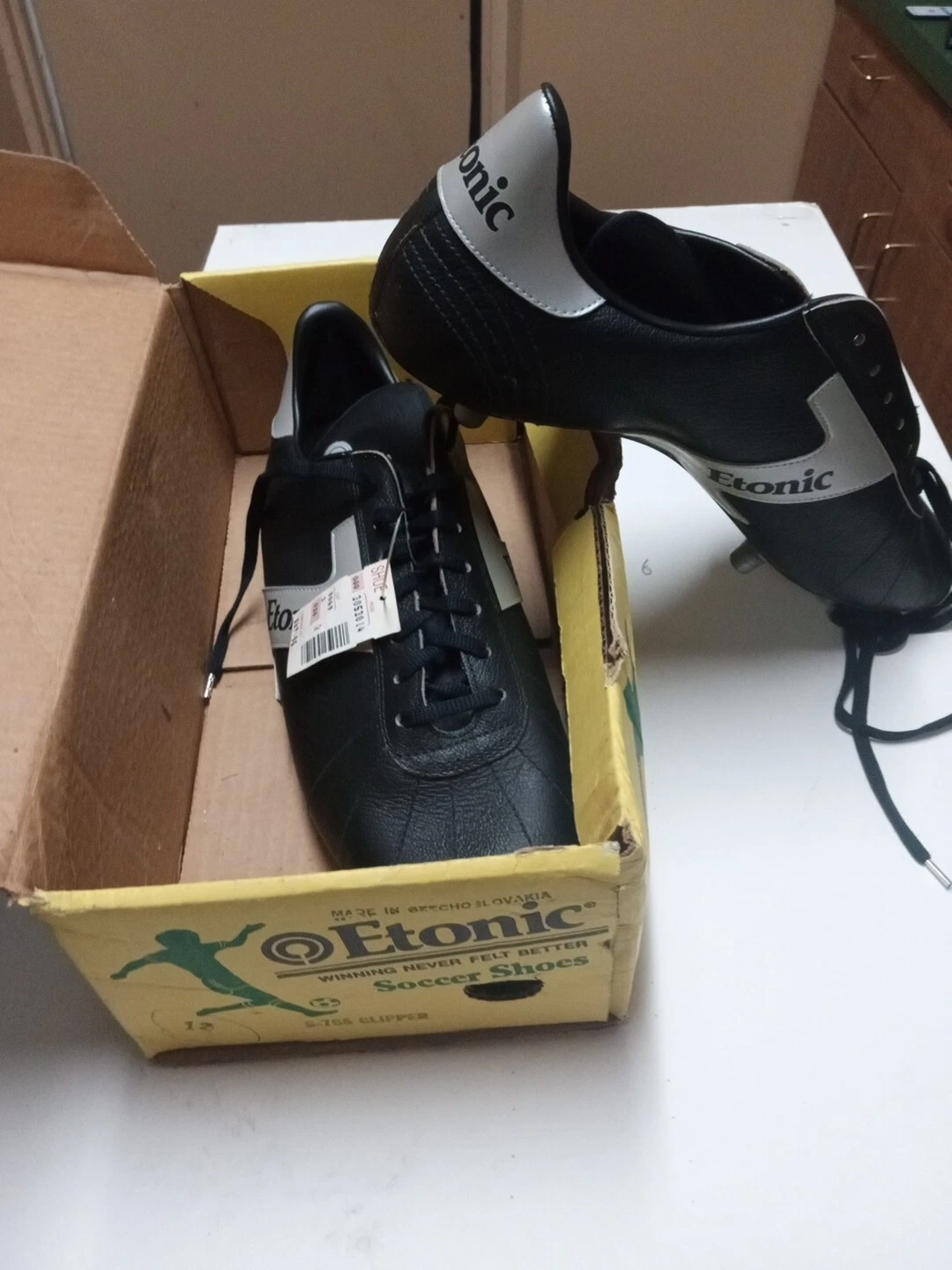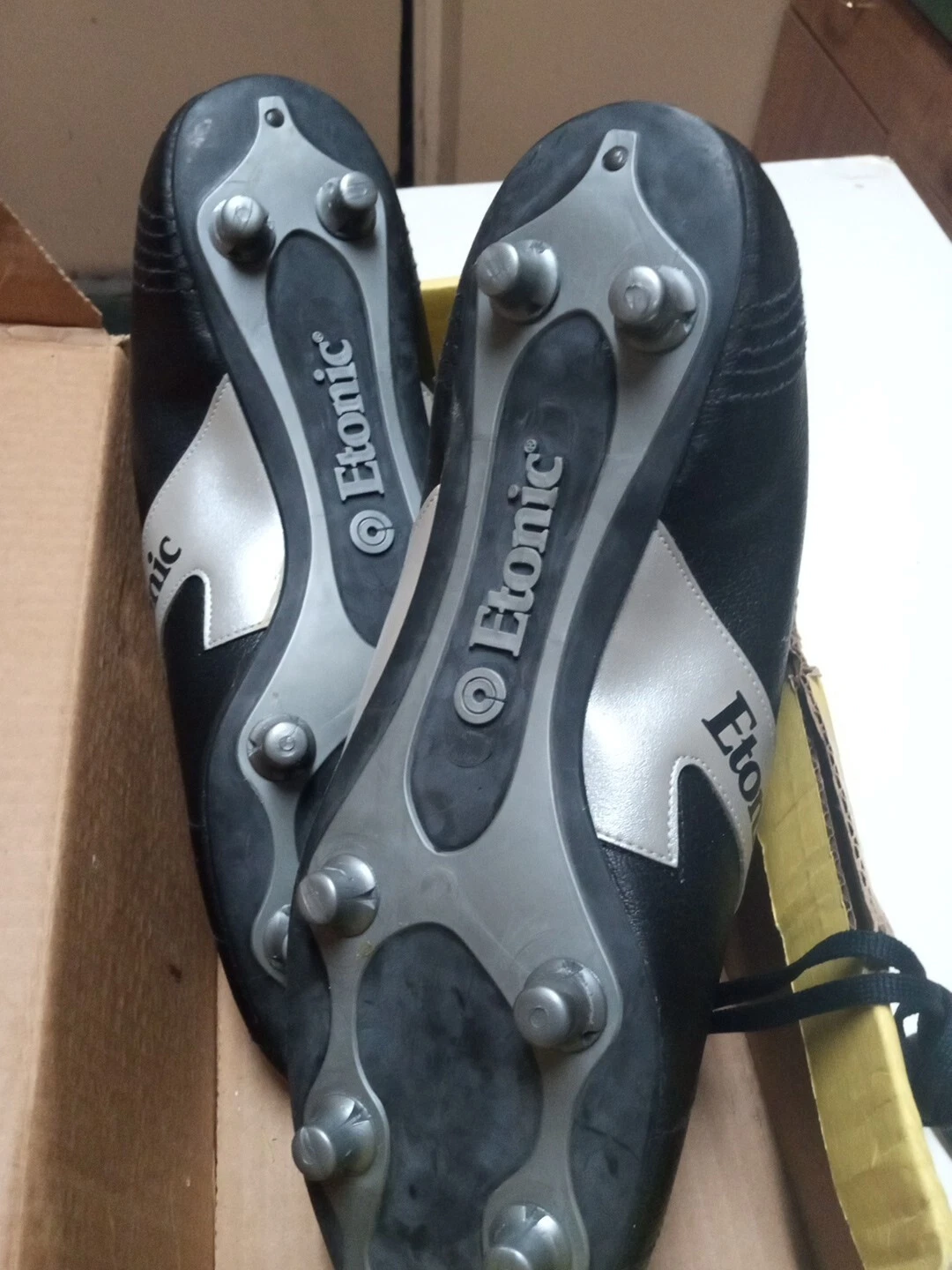In the 1970’s and the height of the old NASL- Everyone wanted to get in on the cash cow action
America’s Attempt to Break Into Soccer Boots
In the 1970s and early 1980s, the global soccer boot market was firmly controlled by European giants such as Adidas and Puma. Into this arena stepped Etonic, an American athletic shoe company best known for running and golf footwear. With soccer beginning to gain a foothold in the United States, Etonic launched its own line of boots, marketed heavily as the first serious “American soccer shoes” that could rival Europe’s best. Ads proudly proclaimed endorsements from coaches like I.M. Ibrahim of Clemson University, hoping to establish credibility in a sport still seen as foreign to many Americans.
Bold Claims and Technical Gimmicks
Etonic marketed its boots as packed with innovation. The ad highlights a “unique Dr. Rob Roy McGregor® piece heel/arch support” designed to cradle the foot, along with riveted critical-stress points and replaceable cleats. These features were pitched as breakthroughs that no European boot offered. The design was also visually striking, with large Etonic logos and distinctive stripes aimed at creating brand recognition. The tone of the campaign was clear: America could produce a soccer boot as good as, or better than, Europe.
Heavy, Awkward, and Over-Engineered
Unfortunately, the reality of the Etonic soccer boot often fell short of the advertising hype. Players reported the shoes to be bulky, stiff, and overly engineered, with the “supportive” heel structure feeling intrusive rather than comfortable. The use of thick leather added weight at a time when European companies were prioritizing lighter, more flexible materials. On the field, the boots lacked the sensitivity and control players desired, making them better suited for casual wear or training than competitive matches.
Durability Versus Performance
To Etonic’s credit, the boots were tough. They could withstand long training sessions and hard surfaces without quickly breaking down. However, this durability came at the cost of playability. The stiff sole and clunky fit didn’t allow for the finesse and quick movement needed in high-level soccer. This placed the Etonic boots firmly in the category of “practical but uninspiring,” a fatal flaw when the sport’s culture was increasingly driven by style, speed, and flair.
Marketing Ahead of Reality
What really undermined the Etonic soccer boot was the disconnect between marketing and lived experience. The advertisements promised European-level innovation, but players quickly discovered that the shoe was nowhere near as refined as Adidas’s Copa Mundial or Puma’s King. Rather than winning over serious players, Etonic became something of a novelty—a reminder of America’s struggle to produce credible soccer gear in an era when the sport was still finding its identity stateside.
A Forgotten Experiment
Today, the Etonic soccer boot is mostly forgotten, remembered more for its bold advertising than its performance. It stands as an example of how difficult it was for American companies to break into the soccer market before the sport truly exploded in popularity. For collectors, the boots are curiosities that represent a unique period in U.S. soccer history. For players who actually wore them, however, they remain a reminder that not every “innovation” translates into a better experience on the pitch.




Comments are closed.